
Grantee Portfolio
Our support enables scientists to take intelligent risks. To defy the predominant expectations in their field. To go after their big ideas.
-

Holly Moeller, Ph.D.
University of California, Santa Barbara
Predicting Metabolic Plasticity in Marine Planktonic Mixotrophs
How do marine microbes balance their metabolic investments in photosynthesis and phagotrophy to maximize their growth rates in variable ocean conditions?
Scout note:
“Holly will combine state-of-the-art microscopy and proteomics with her innovative modeling approaches -- a rare combination of talents -- to determine the ‘rules’ that explain where and when mixotrophs carry out their different metabolisms. Success in this project will be a huge leap forward towards better understanding trophic interactions in different ecosystems, and transform our ability to forecast the ramifications of ocean change on the biodiversity of marine ecosystems.”
— Ginger Armbrust, Ph.D. -

Megan Behringer, Ph.D.
Vanderbilt University
Making Chaos Tractable
What ecological factors drive microbial population transitions from predictable, stable states to less predictable, chaotic dynamics?
Scout note:
“Dr. Behringer addresses a critical knowledge gap with a reproducible, tractable model designed to directly test an important and longstanding theory on stability vs. chaos in biological systems. By harnessing the power of microbial systems, she aims to uncover how environmental drivers influence complex chaotic behavior in these communities. Enabling better predictions of ecosystem dynamics has profound impacts as our world’s ecosystems continue to undergo rapid and unprecedented changes.”
— Paul Turner, Ph.D. -

Elizabeth Ostrowski, Ph.D.
University of Washington Bothell
The causes and consequences of microchimerism: a test of evolutionary theory in a wild carnivore population
Can foreign cells acquired during pregnancy - from a mother, offspring, or twin - mediate parent-offspring or sibling genetic conflicts?
Scout note:
“Dr. Ostrowski will use a brilliant strategy to establish the first rigorous empirical study of microchimerism hypotheses in a wild animal population. This ambitious project could be groundbreaking for evolutionary studies of animal behavior, and has potential to transform our understanding of evolved conflicts (parent-offspring and sibling genetic conflicts) as well as resource allocation during pregnancy, and maternal behavior.”
— Paul Turner, Ph.D. -

Herdeline Ardoña, Ph.D.
University of California, Irvine
Bioinspired Photon Management to Enable Long Wavelength-Driven Polymeric Hydrogelation Mechanisms
Can we mimic plant pigments by using light with wavelengths beyond the visible region to create and shape soft materials?
Scout note:
“Digs’s project has the potential to fundamentally change the way we create new materials. She will use plant-inspired approaches to harness light for polymerizing thick materials, with broad applicability across material classes. In cell-laden hydrogels, her approach will eliminate light-induced DNA damage and stress, completely shifting paradigms for the hydrogel community and beyond. Her project could both have long-lasting and broadly disseminated impact.”
— Shelly Peyton, Ph.D. -

Zeinab Jahed, Ph.D.
University of California, San Diego
Nuclear Envelope Failure as a Driver of Aging in Long-Lived Cells
Why do some of the body’s most important cells — like those in the brain and heart — age, even though they never divide?
Scout note:
“The most exciting aspect of this project is that it brings together a long-standing problem with a new tool that has the potential to overcome a key obstacle. Dr. Jahed employs a novel method to probe the mechanism behind a poorly understood process of aging at the cellular level. By extending understanding of these mechanisms, her project has the potential to ultimately lead to new interventions that can slow aging of key cell populations in the heart, and the peripheral and central nervous system.”
— Jeanne Stachowiak, Ph.D. -

Reika Katsumata, Ph.D.
University of Massachusetts Amherst
Overwriting Structure-Property Relationships of Emerging Materials via High Throughput (PVT) Measurements
Can we rewrite the rules that link the properties of a material to its molecular sequence and architecture?
Scout note:
“Reika aims to develop a novel technique to characterize polymer materials, tackling a challenge that no one has been able to reliably solve. Her project is a unique combination of high risk, very technically challenging, and extremely fundamental. If she succeeds, Reika will pioneer a straightforward and affordable technique that will revolutionize how we characterize the fundamental properties of any polymeric material.”
— Shelly Peyton, Ph.D. -

Fangyuan Ding, Ph.D.
University of California, Irvine
Decoding RNA Editing Decisions at the Single-Molecule Level
Where, when, and how often do RNA edits occur? How do these changes fine-tune gene function without altering DNA?
Scout note:
“Dr. Ding aims to create the first visual atlas showing exactly where and how RNA editing happens in the brain. If this effort succeeds, we would gain a significant understanding of the rules that guide if, when, and where RNA editing happens and how it shapes a cell’s behavior. Long term, this work can lead to major advancements in neuroscience, with enormous potential to be adapted to study any tissue or disease. This project is early, high-risk, and potentially field-changing.”
— Mireille Kamariza, Ph.D. -
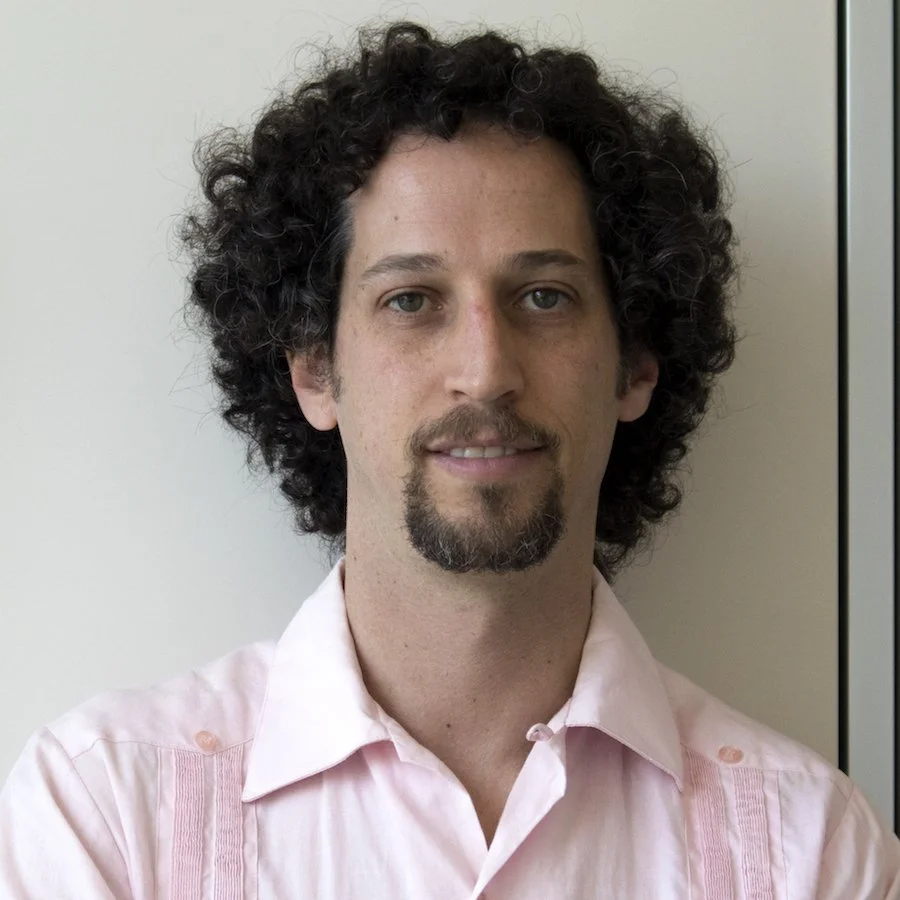
Andrés Bendesky, Ph.D.
Columbia University
The evolutionary forces and genetic changes that shape genomic imprinting and affect healthy development
How do genetic arms races between paternal and maternal genomes contribute to the origin and maintenance of species?
Scout note:
“Dr. Bendesky’s project embraces genuine discovery and risk by using a powerful natural experiment to study imprinting incompatibilities and address why such a risky epigenetic system would evolve and persist. This research could reshape our understanding of the evolution of imprinting and species’ incompatibilities, and clarify its impact on embryonic development, with important implications for human health and disease.”
— Harmit Malik, Ph.D. -

Laura Gunn, Ph.D.
Cornell University
Using Hornworts to Reimagine Photosynthesis
Can we deconstruct and reconstruct a photosynthesis-boosting compartment in plants to understand their functional trade-offs and improved capacity to fix carbon?
Scout note:
“Laura’s project has the goal of improving the efficiency of a major enzyme in photosynthesis. This is a bold and risky project that has tremendous potential to improve agriculture and advance environmental sustainability. Her compelling and novel approach leverages the evolutionary history of an understudied group of land plants as well as cutting edge technologies. Although it may be a grueling endeavor, solving intractable problems in plant biology can have far reaching consequences.”
— Devaki Bhaya, Ph.D. -
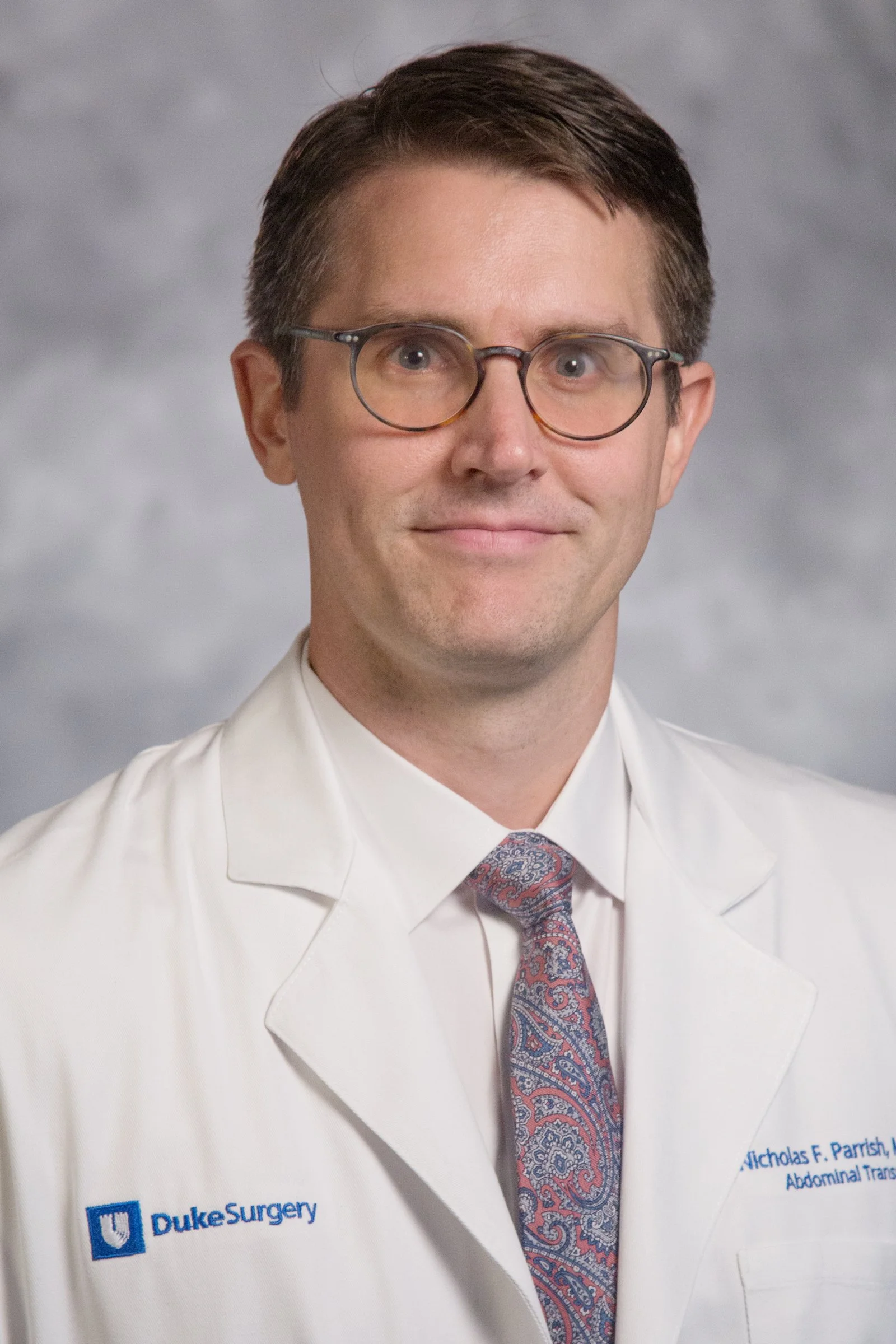
Nicholas Parrish, M.D., Ph.D.
Duke University
An endogenous herpesvirus drives autoimmune motor neuron disease
Can virus-derived elements in the human genome (‘endogenous herpesviruses’) interact with the immune system to cause neurological disease?
Scout note:
“Nick’s project challenges current dogma with his hypothesis that endogenous retroviruses (generally thought to be dormant in the host) shape host immunity and contribute to the development of neurological disease. He aims to uncover a fundamentally new mechanism by which virus-derived elements that form our biological niche can cause disease--if successful, it would be a seminal discovery in science that could lead to advances in personalized medicine.”
— Wilton Williams, Ph.D. -

Chuchu Zhang, Ph.D.
University of California, Los Angeles
Exploring interoceptive sensory logic reshaped by pregnancy
How does brain adjust its internal "sensing systems" during bodily changes like pregnancy?
Scout note:
“Dr. Zhang will investigate how sensory adaptation mechanisms in brainstem neurons could impact the rules that govern interoception (how the body senses internal state and responds). Her research could add a paradigm-shifting point to the study of interoception coding in the brainstem, and reveal insights into how malfunctions in these processes can lead to feeding disorders, pregnancy complications, and significantly impact quality of life.”
— Elaine Hsiao, Ph.D. -

Duane Wesemann, M.D., Ph.D.
Brigham and Women’s Hospital / Harvard Medical School
Decoding the Origins of Lymphocyte Cooperation in Immunity
Did adaptive immune cells learn to work together before the modern immune system existed?
Scout note: “Duane is tackling a bold hypothesis in a remarkably interesting model system. With this project, he may uncover that the precursors of adaptive immune cells were interacting with each other well before their adaptive functions even emerged. Such new knowledge will be fundamental to our understanding of the evolutionary origins of regulation in the immune system--it could change our view of how the immune system evolved.”
— Gabriel Victora, Ph.D. -

Elaine Luo, Ph.D.
UNC Charlotte
Discovering novel carbon fixation pathways in uncultivated marine microbes
Can we discover new mechanisms that microbes have evolved to transform inorganic carbon into biomass?
Scout note:
“Dr. Luo’s project aims to shed light on the deep ocean and link genetic diversity and functional diversity in this poorly characterized part of our planet. After two decades of metagenomics, we desperately need new approaches to link genomes to biomes--her project holds tremendous promise in addressing this challenge. If successful, her work will lead to improved models of ocean carbon cycling, which is critical for understanding Earth’s habitability.”
— Angelicque White, Ph.D. -
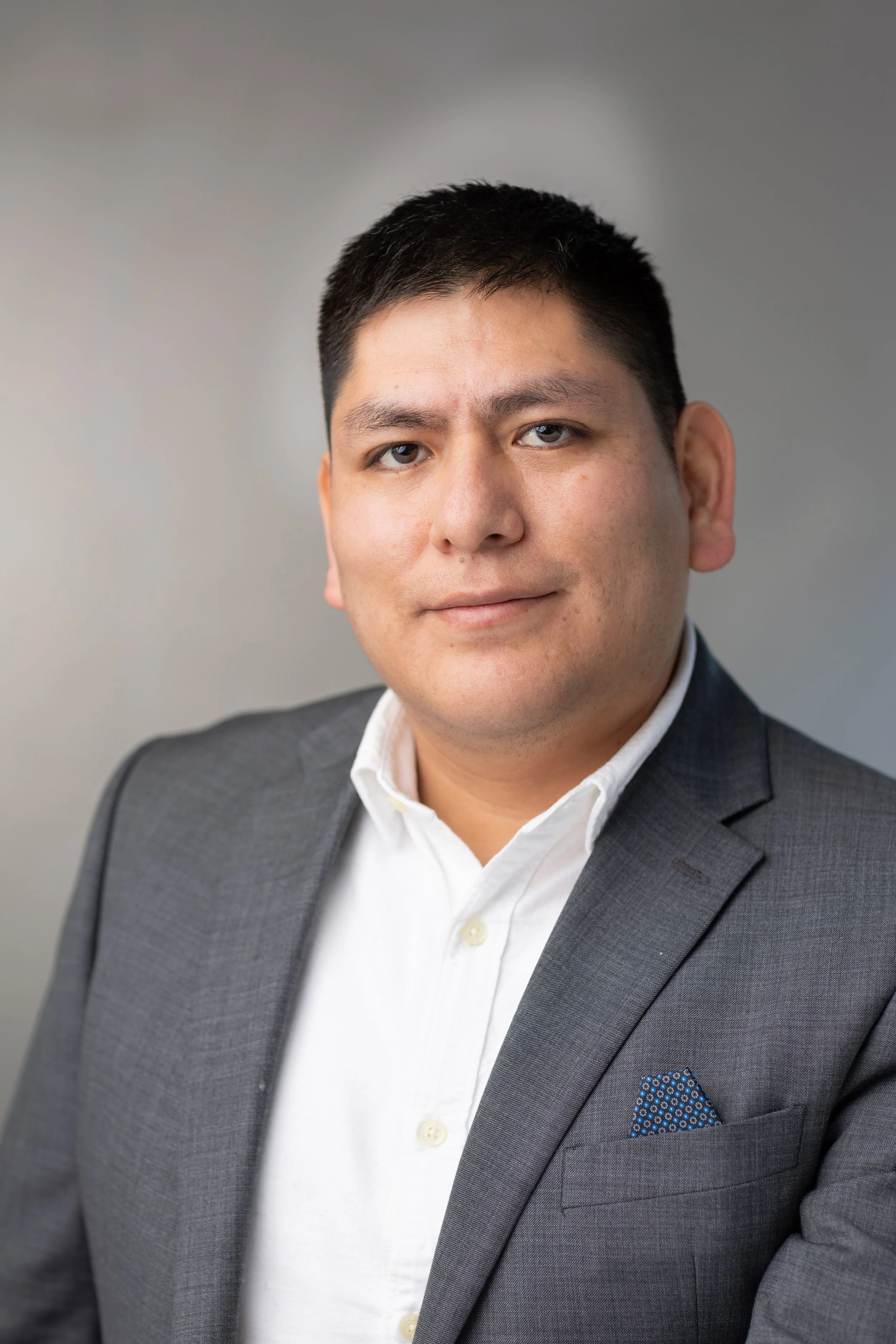
Christian Cuba Samaniego, Ph.D.
Carnegie Mellon University
Revealing the role of timing in cellular reprogramming using synthetic biology
How do previously unstudied variables affect how cells are reprogrammed to take on new identities?
Scout note:
“Christian openly challenges the stagnation in deepening our understanding of one of the most famous sets of transcription factors. By using synthetic gene circuits, he aims to leap over the technical hurdles that have prevented scientists from rigorously exploring both stoichiometry and time. If successful, this research could have important implications for the molecular boundary between primordial versus mature cells, and cancer versus stable cell states.”
— Karmella Haynes, Ph.D. -

Eva Dyer, Ph.D.
University of Pennsylvania
Discovering Cell Type-Specific Computational Motifs from Neural Activity
How do the brain’s diverse cells work together to process information, and what rules shape their individual functions?
Scout note:
“Dr. Dyer’s exciting computational project focuses on one of the longest-standing efforts in neuroscience, which is to understand the level of granularity of different cell types and how their unique features lend themselves to function in circuits. Her project is very early stage and highly innovative--if it works, it could transform neuroscience and change how much scientific insight we can get out of our empirical data, as enabling deeper discovery through more efficient science is more important than ever.”
— Kay Tye, Ph.D. -

Alexander Meeske, Ph.D.
University of Washington
Anti-phage immunity in multicellular cyanobacteria
How do multicellular bacterial communities respond to viral infection?
Scout note:
“Dr. Meeske is a creative, molecularly-minded microbiologist who seeks to bring the largely model organism-based insights we’ve gained in recent years regarding the phage/bacterial arms race to bear on an environmentally important non-model organism. His project has the potential to significantly reshape how we think about bacterial immunity and introduce a fundamentally new layer of complexity to our understanding of bacterial defense.”
— Joseph Mougous, Ph.D. -

Crystal Rogers, Ph.D.
University of California, Davis
From Stability to Invasion: Cracking the Microtubule Code of EMT
Can a hidden “code” inside the cell’s skeleton determine when cells stick together or break apart to move?
Scout note:
“Dr. Rogers is confronting a critical knowledge gap that has long captured the attention of scientists: she aims to advance our knowledge of the mechanics of cell state transitions during the earliest stages of multicellular system formation. Her project could add an important new dimension to our understanding of dynamic biological codes, and long term, lead to new strategies and new molecular tools to address major challenges in developmental biology and disease.”
— Karmella Haynes, Ph.D. -

Michael Vahey, Ph.D.
Washington University in St. Louis
Mechanisms of viral penetration through the periciliary brush
How do respiratory viruses penetrate the protective layer of ‘hair-like’ appendages (motile cilia) that cover human airway cells?
Scout note:
“Dr. Vahey’s project combines virology with biophysics and quantitative imaging in creative ways to ‘catch viruses in the act’ of interaction with cilia, in order to understand the role of cilia during infection. His research could inspire new model systems for viral entry, and change how we study diverse upper respiratory viruses. In the longterm, this work could lead to future reductions in the societal burden of viral disease.”
— Jeanne Stachowiak, Ph.D. -

Chrystal Starbird, Ph.D.
University of North Carolina
Investigating TAM receptors as mediators of non-lytic poliovirus spread at the atomic scale and single-cell level
How do viruses spread without destroying the cells they infect?
Scout note:
“Dr. Starbird’s project has the potential to revolutionize our understanding of non-enveloped virus infection and propagation mechanisms. If successful, her work will transform how we approach combating viral infections, improve public health strategies, and deepen our understanding of fundamental cellular processes--making it a significant contribution to multiple fields of scientific inquiry.”
— Harmit Malik, Ph.D. -

Danielle Guez-Barber, M.D., Ph.D.
University of Colorado School of Medicine
Macrophages in blood and brain after hypoxia-ischemia
How do blood and brain macrophage populations help or hurt the developing brain after injury?
Scout note:
“Dr. Guez Barber’s innovative project addresses critical gaps in our understanding of neonatal brain injury through pioneering research into sex-specific immune responses and the role of microglia. Her basic science research has potential to reveal transformative insights into immune biology, and create a strong foundational basis for the future development of personalized strategies to improve outcomes for vulnerable newborns.”
— Kay Tye, Ph.D.
-

Timothy Cernak, Ph.D.
University of Michigan
Conservation of Chemical Defenses in Harlequin Frogs
Can decoding the chemical mechanisms of toxin production in the Panamanian golden frog enable rewilding of this critically endangered species?
Scout note:
“Using a combination of omics, chemical biology and AI technologies, Dr. Cernak aims to understand the molecular underpinnings of a core defense mechanism used by the near to extinct Panamanian golden frog. His project takes a uniquely molecular perspective that has enormous potential to establish a new field and shape future conservation efforts.”
— Janet Jansson, Ph.D. -

Harold Pimentel
University of California, Los Angeles
Decoding rare genetic variation: Integrating Deep Mutational Scans with GWAS for disease insight
Can integrating diverse datasets reveal new understanding of rare genetic variants that cause disease?
Scout note:
“Dr. Pimentel’s approach uses clever computation combined with a deep understanding of genetics and the identification of a gap in our current approaches. If successful, his project could lead to an integrative framework capable of uncovering hidden genetic drivers of rare diseases — offering powerful new insights into the biology of complex traits and revolutionizing the landscape of precision medicine.”
— Kay Tye, Ph.D. -

Moitrayee Bhattacharyya, Ph.D.
Yale University
Biophysics of membrane contact sites at nanoscale resolution
Can a ‘molecular scalpel’ enable us to isolate intact membrane contact sites for biophysical, biochemical, and structural analysis?
Scout note:
“Dr. Bhattacharyya’s project takes an out of the box approach to isolate and study intact membrane contact sites (MCS), which are important for every aspect of physiology but are nearly impossible to study. Her project creates an opportunity to go beyond shapes and descriptions, to finally characterize MCS at a molecular level. If it works, it would be completely transformative.”
— Yamuna Krishnan, Ph.D. -

Chi-Min Ho, Ph.D.
Columbia University
Leveraging unique naturally occurring microbial molecular machines to power next generation protein sequencing
Can we repurpose molecular machines found in microbes to enable a faster, more sensitive way of sequencing proteins?
Scout note:
“Mimi’s project aims to develop a method to enable direct, real-time protein sequencing. Using microbial machinery found in nature, her approach is expected to be more sensitive, accurate, and quantitative than existing technologies. If successful, her work will democratize our understanding of proteins and their diverse functions, enabling a new era of scientific exploration.”
— Ellen Yeh, Ph.D.
-

Ahmed Badran, Ph.D.
Scripps Research
Investigating RuBisCO Catalysis with New-to-Nature Chemistries
Do the building blocks of nature constrain protein evolution? Can we discover new biochemical activities by changing the chemistry available to protein biosynthesis?
Scout note:
“Dr. Badran’s innovative project merges disparate fields to achieve a long standing goal. If successful, his research has potential to revolutionize our understanding of protein synthesis and overcome limitations of natural enzyme function, with far-reaching implications for climate change and beyond.”
— Yamuna Krishnan, Ph.D.
-

Willow Coyote-Maestas, Ph.D.
University of California, San Francisco
Bridging biophysical transporter reductionism to complex environmental-genetic interactions in metabolism
How do genetic mutations and the environment interact to lead to complex physiology and disease?
Scout note:
“Willow’s ambitious project aims to bring deep mutational scanning to the realm of complex environment-genetic interactions. His approach may help establish a new model system for studying drug-genetic interactions. If successful, this project will improve our understanding of diseases of multigenic or polygenic nature, and more broadly, disease-related mutations of unknown significance.”
— Taekjip Ha, Ph.D.
-

Hesper Rego, Ph.D.
Yale University
Unraveling the connection between M. tuberculosis metabolism and antibiotic sensitivity at the single-cell level
How and why do genetically identical Mycobacterium tuberculosis cells differ metabolically?
Scout note:
“Dr. Rego’s incredibly innovative project aims to uncover the molecular basis of a striking phenomenon: how genetically identical bacterial cells can show differences in antibiotic survival vs. sensitivity. Her project has potential to add a completely new perspective to the molecular basis of bacterial virulence, inform new strategies for clinical treatment of drug-resistant tuberculosis, and open doors to a new subfield of microbiology.”
— Elaine Hsiao, Ph.D.
-
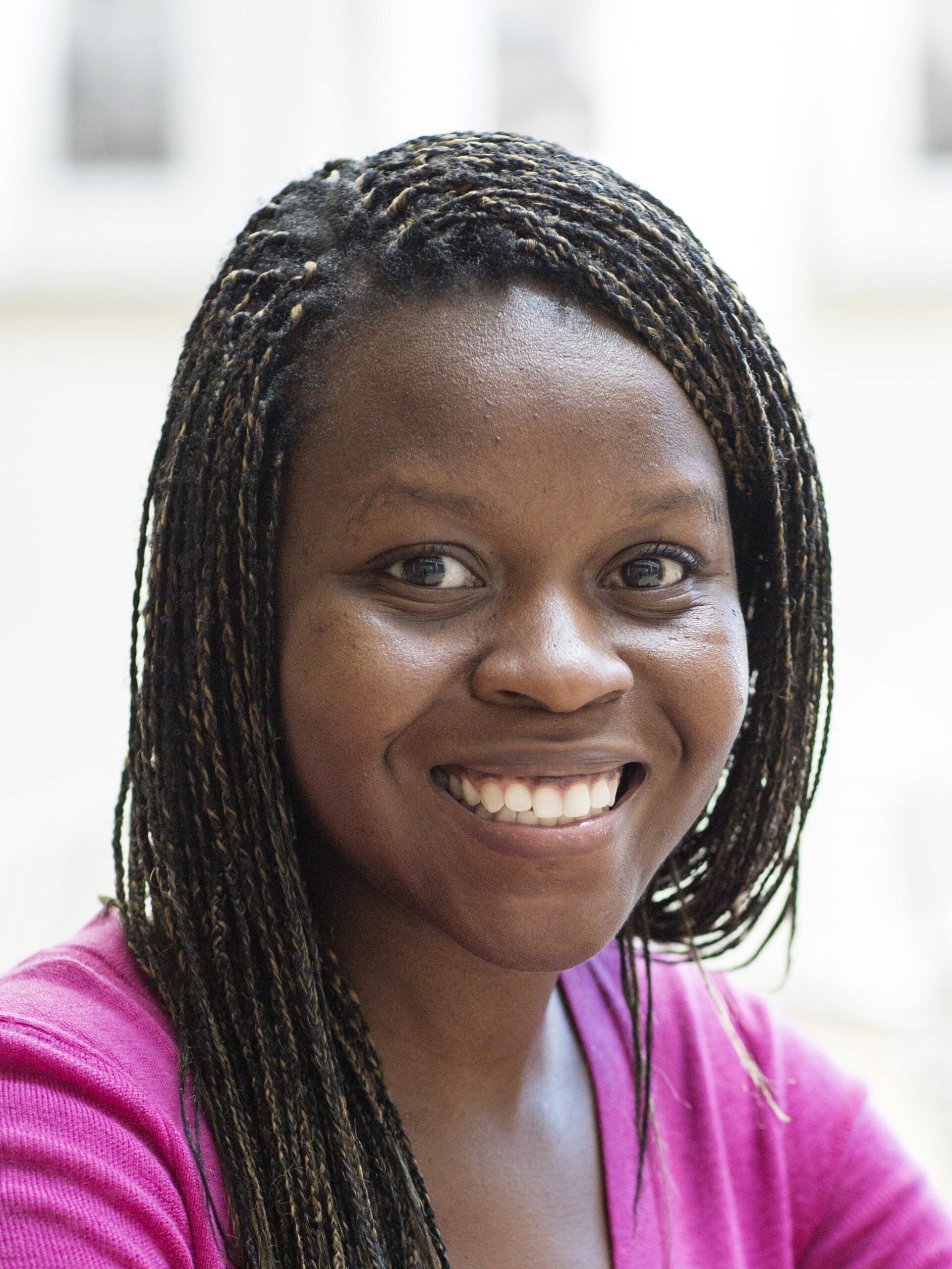
Florentine Rutaganira, Ph.D.
Stanford Medicine
Reconstructing the Emergence of Cancer at the Dawn of Multicellularity
What does early multicellular life teach us about the origins of cancer?
Scout note:
“Flora is using a nontraditional model system to understand the early origins of cancer-associated genes. What sets it apart is thinking about cancer as a process that may have a long evolutionary history. It is a bold conjecture and, if successful, her project could be a breakthrough in understanding cancer and cell proliferation control.”
— Devaki Bhaya, Ph.D.
-

Jeffrey Henderson, M.D., Ph.D.
Washington University in St. Louis
Host-modulated redox active metal ion toxicity in microbial killing and virulence
How do human immune cells kill microbes and how do disease-causing microbes evade them?
Scout note:
“Dr. Henderson seeks to test a new hypothesis about a mechanism of innate immunity against bacterial infections. His project brings a bioinorganic chemistry perspective to a health puzzle, and if successful, will lead to insights with the potential to enable more effective approaches to sensitizing pathogens to the immune system.”
— Dianne Newman, Ph.D. -

Christina Hueschen, Ph.D.
University of California, San Diego
Mechanical basis of parasite shape changeHow do parasitic worms morph in form to physically navigate the human body?
Scout note:
“By focusing on a neglected tropical disease, Christina is venturing into an unknown terrain where very little is known. Her project is an important anchor to the overall field of ‘physics of parasites’ and sets a foundation for fundamental basic science work on a disease that infects millions of people in the Global South.”
— Manu Prakash, Ph.D. -

Betül Kaçar, Ph.D.
University of Wisconsin-Madison
Rebuilding Life’s Ancient Innovations
How did Earth's earliest organisms adapt to changing climate and how did key enzymes that allow them to remove CO2 and nitrogen from the atmosphere evolve over billions of years?
Scout note:
“Perhaps no other problem poses as severe a risk to the health of people and the planet as climate change. This project uses an ancient protein reconstruction to address how planetary changes in oxygen and nitrogen conditions shaped two of the most important enzymes in photosynthesis and nitrogen fixation. This is innovative, ambitious, and daring science.”
— Harmit Malik, Ph.D.
-

John F. Brooks II, Ph.D.
Princeton University
Impact of rhythmic antimicrobial protein production on the structure and function of the microbiome
How does the circadian clock influence the structure and function of the gut microbiome?
Scout note:
“Dr. Brooks’ project is the first step in determining how rhythms in microbial functions may be engendered and might lead to a better understanding of how these rhythms in the microbiome influence overall health and fitness. This project addresses a fundamental but less-explored area that may have far-reaching implications for health.”
— Coleen Murphy, Ph.D.
-

Elliott SoRelle, Ph.D.
University of Michigan
Pathogenic Chromatin Remodeling During Viral ReactivationHow does reactivation of a latent viral infection rewire host cell identity and its ability to cause disease?
Scout note:
“Elliott’s ambitious project leverages state-of-the-art technologies to tackle major knowledge gaps in how viral reactivation promotes disease. If successful, his project will improve our understanding of how virus reactivation reprograms host cell function and responses at the basic science level, impacting how we study tumor formations associated with viral infections.”
— Wilton Williams, Ph.D. -

Jennifer Martiny, Ph.D.
University of California, Irvine
Eco-evolutionary principles in the human gut microbiomeWhat does eco-evolutionary theory teach us about improving ecosystem functioning and productivity in the human gut microbiome?
Scout note:
“Jen is taking a large creative leap to understand whether an important ecological and evolutionary principle that is well-established in soil environments also has relevance in human-associated microbiomes. If successful, her project could drive completely new approaches to microbiome assessment, and ultimately, lead to massive impacts on human health.”
— Rob Knight, Ph.D. -

Taras Kreslavskiy, Ph.D.
University of Chicago
Could γδT cells be selected on any surface protein expressed in the thymusHow do γδT cells (a lineage of adaptive immune cells) develop in the thymus to recognize a wide range of unrelated self molecules?
Scout note:
“Taras aims to increase our understanding of a poorly understood lineage of adaptive immune cells which are involved in multiple important disease processes. His project is highly innovative and he is exceptional at devising novel yet remarkably straightforward approaches. He’s among those at the forefront of solving the puzzle of gamma-delta cell specificity.”
— Gabriel Victora, Ph.D. -

Sepideh Dolatshahi, Ph.D.
University of Virginia
Uncovering the Role of Maternal Stress as a Driver of Disparities in Newborn Cellular and Humoral Immunity
How does maternal stress affect immunity at the fetal-maternal interface?
Scout note:
“Dr. Dolatsahi’s multi-disciplinary approach will provide - for the first time - a glimpse of the biochemical wiring and immune pathways that drive placental and maternal health. This research has potential to catalyze critical discoveries with significant implications for the health of mothers and babies.”
— Mireille Kamariza Ph.D.
-

Rogier Braakman, Ph.D.
Massachusetts Institute of Technology
Global biogeography and evolution of microbial cross-feeding in the ocean
How do microbial interactions differ across ocean regions and how does their evolution shape the global carbon cycle and Earth’s climate?
Scout note:
“Rogier’s project addresses the important topic of interconnectedness of microbial communities by taking a big picture approach to understanding marine ecosystems. It is a bold, risky undertaking that requires deep understanding of ocean biogeochemistry, metabolism, and evolution -- Rogier’s rare combination of skills. This project has potential to lead to a re-evaluation of the evolution of emergent ecosystem behaviors.”
— Ginger Armbrust, Ph.D.
-

Jennifer Jay, Ph.D.
University of California, Los Angeles
A multi-scale approach to understanding environmental antimicrobial resistance patterns and hotspots
Can the integration of satellite data, geospatial information, and low-cost screening tools deepen our understanding of antimicrobial resistance in the environment?
Scout note:
“Dr. Jay’s project aims to track and predict antimicrobial resistance (AMR) ‘hotspots’ by integrating diverse environmental datasets to generate a powerful, open-source resource. She tackles this global health threat by starting with prevention -- an ounce of prevention is worth a pound of cure. Her project has the potential to reshape how we evaluate AMR risk, and provide valuable public health benefits.”
— Dianne Newman, Ph.D.
-

Priya Banerjee, Ph.D.
University at Buffalo
Liquid RNA Condensates as Programmable Scaffolds for Compartmentalization and CatalysisWhat are the biophysical rules for RNA condensate formation within cells, and what do they tell us about function?
Scout note:
“Dr. Banerjee’s project brings unique insights into the origin of life by understanding the biophysical properties and self-organization principles encoded into RNA molecules. His hypothesis is bold and innovative, and has the potential to answer conundrums in how life may have arisen with RNA, while also bringing insight to the development of more effective RNA-based interventions.”
— Taekjip Ha, Ph.D.
-

Elizabeth Sibert, Ph.D.
Woods Hole Oceanographic Institution
Reconstructing ancient zooplankton dynamics from fish microfossils in deep-sea sediments
What can microfossil records of fish teeth tell us about how marine ecosystems adapt to major climate change events?
Scout note:
“Dr. Sibert is taking a completely novel approach to assessing ecosystem structure in paleo oceans. If successful, her project will provide a comprehensive view of how ancient ecosystems responded to major changes in ocean conditions--an essential first step to better understanding systemic risks to the health of our planet.”
— Ginger Armbrust, Ph.D.
-

Bianca Jones Marlin, Ph.D.
Columbia University
Olfactory Sensory Experiences Impart Susceptibility to Anxiety via Transgenerational Epigenetic Inheritance
How can fear memories or traumatic experiences be inherited across generations? What is the neurological / cellular mechanism underlying this phenomenon?
Scout note:
“This project is stunningly bold and challenges the way we think about innate fear and memory in general. In addition to rewriting textbooks, and reestablishing our foundational knowledge of neuroscience and genetics, this project can change our understanding of psychology, of our sociocultural backgrounds, of what provides individual variability and has powerful implications on evolution.”
— Kay Tye, Ph.D.
-

Emma Chory, Ph.D.
Duke University
Probing the Principles of Evolutionary Decision-making: Counter-Evolution of Protein Interactions via PRANCE
Why do protein interactions evolve along certain trajectories and not others? What underlying principles govern the evolution of protein-target specificity and promiscuity?
Scout note:
“This project is highly innovative and early-stage research which focuses on the science of protein evolution. If successful, Emma’s project will provide fundamental insights into the evolutionary process itself, which will have broad implications on a number of important fields.”
— Harmit Malik, Ph.D.
-

Natalia Korotkova, Ph.D.
University of Kentucky
Functional significance of extracytoplasmic intrinsically disordered regions in streptococci
What are the functions of glycosylated intrinsically disordered regions (regions without defined structure) of membrane proteins in streptococcal bacteria?
Scout note:
“Dr. Korotkova is seamlessly combining bacterial genetics and physiology with in-depth biochemistry to understand the regulatory mechanisms of intrinsically disordered regions in bacterial proteins - all while keeping an eye on the human pathogenic side of the organisms. Her project could reveal bacterial IDRs as a fruitful and important area of investigation, with especially broad ramifications on the field of microbiology.”
— Joseph Mougous, Ph.D.
-

Leslie Goo, P.h.D., M.P.H.
Fred Hutchinson Cancer Center
Unlocking the ‘black box’ of antibody-dependent enhancement of dengue virus infection
Why do antibody responses go awry and enhance (instead of inhibit) infection by some viruses - such as dengue virus- to contribute to worsening disease, and what is the mechanism behind this perilous effect?
Scout note:
“Mechanisms underlying antibody-dependent enhancement remain mysterious beyond a rudimentary understanding. By deploying powerful, clever genome-wide approaches, this project is likely to lead to a complete understanding of this mysterious process, which will have a major positive impact on basic understanding of this phenomenon and public health acceptance of vaccines.”
— Harmit Malik, Ph.D.
-

Tania Rozario, Ph.D.
University of Georgia
Harnessing the power of transgenics to understand how tapeworms regenerate
Can we understand how tapeworm stem cells regulate growth and regeneration by manipulating their genomes?
Scout note:
“Establishing transgenesis in worms is challenging--some may even say risky. Tania’s intricate knowledge of worm development and unique approach will be key to unlocking this problem. Her project has potential to be transformative and open up new opportunities in the field of regeneration.”
— Ellen Yeh, M.D., Ph.D.
-

Meg Estapa, Ph.D.
University of Maine
Towards in situ bio-optical observations on ice-shrouded ocean worlds
How might the optical signatures of ocean microbes be used to detect life beneath the ice-covered seas of Jupiter and Saturn’s moons?
Scout note:
“Dr. Estapa is pursuing an exciting and innovative project that leverages what we have learned about the optical properties of life in the ocean to interrogate extraterrestrial oceans for signatures of a beating microbial ‘heart’. She is a creative and thoughtful scientist who thinks outside of the box, and her bold project has the potential to create a new discipline at the intersection of optical oceanography and planetary science.”
— Angelicque White, Ph.D.
-

Courtney Ellison, Ph.D.
University of Georgia
Molecular dissection of collective cell behavior
How do bacterial cell components interact to regulate complex processes (such as collective behavior or antibiotic resistance)?
Scout note:
“Courtney’s bold project aims to tease apart the still unknown connections between pilus behavior and efflux pump biology in bacteria. What sets her project apart is her use of sophisticated techniques to address a challenging and basic question in bacterial cell biology. Her project should provide insights into the functional control over behavioral outputs that are important for virulence.”
— Devaki Bhaya, Ph.D.
-

Lars Dietrich, Ph.D.
Columbia University
Understanding how Pseudomonas aeruginosa uses R-bodies to kill phagocytic cells from the inside
How do certain pathogenic bacteria use protein-based 'javelins' to harm host cells?
Scout note:
“Lars’s project hypothesizes that P. aeruginosa uses an incredibly clever mechanism to evade the host immune system--one that, to my knowledge, has not been tested before. The approach is exciting and has a very good shot at succeeding. If the hypothesis is true, it would change the way we think about how to treat recalcitrant infections.”
— Dianne Newman, Ph.D.
-
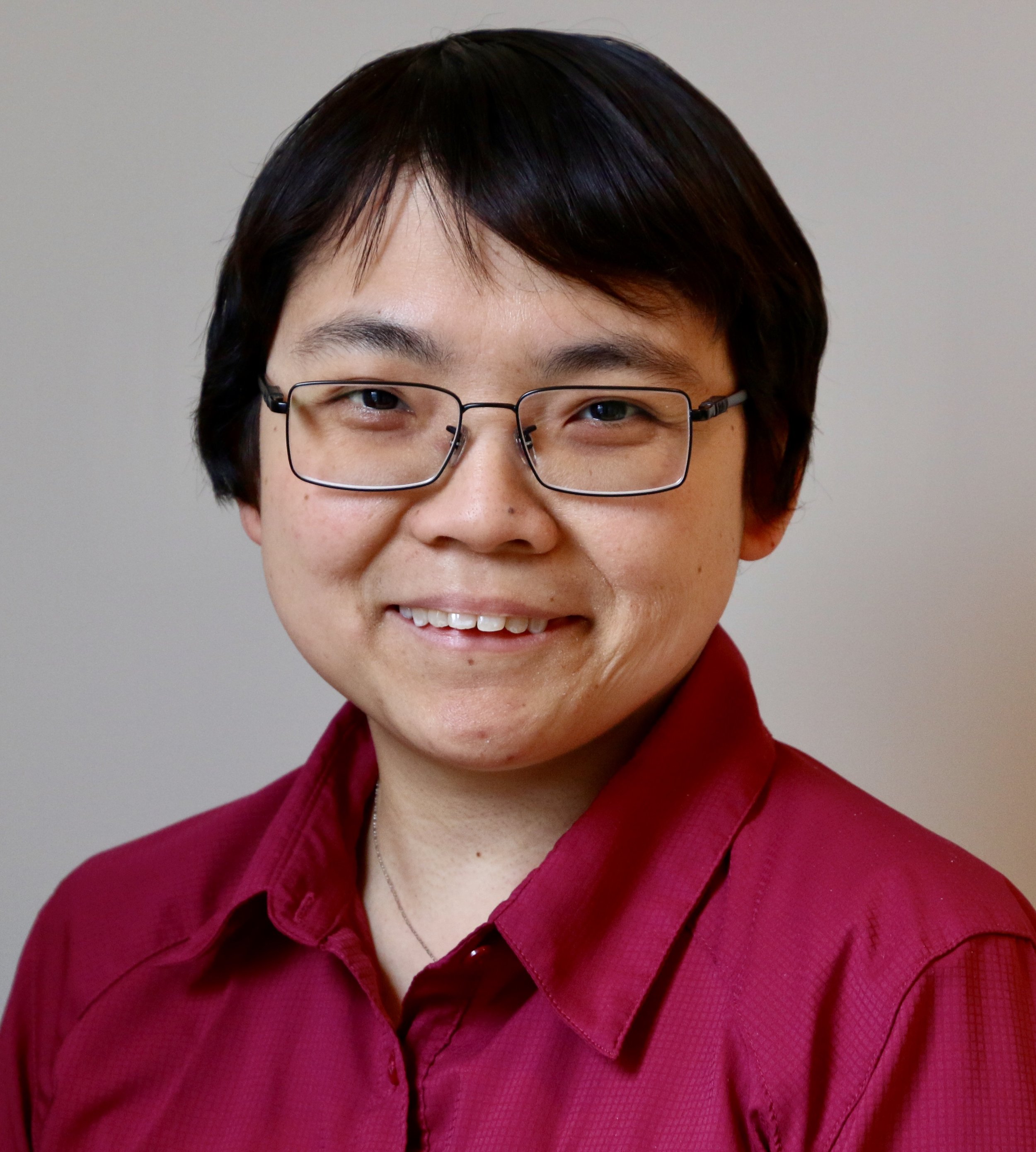
Shumin Tan, Ph.D.
Tufts University
Spatio-temporal understanding of Mycobacterium tuberculosis host adaptation: Illuminating the bacterial perspective
How do individual Mycobacterium tuberculosis cells respond spatiotemporally to changes in the host microenvironment to influence infection outcome?
Scout note:
“Dr. Tan’s project boldly attempts to apply a new method to gain insight into how Mycobacterium tuberculosis (Mtb) survives in the host. Her work may lead to major advances in our understanding of what Mtb metabolic heterogeneity looks like, literally and figuratively, in infections. This project has the right mix of risk and reward, and has the potential to be highly impactful, not only for the Mtb community but for the field of host-microbe interactions more broadly.”
— Dianne Newman, Ph.D.
-
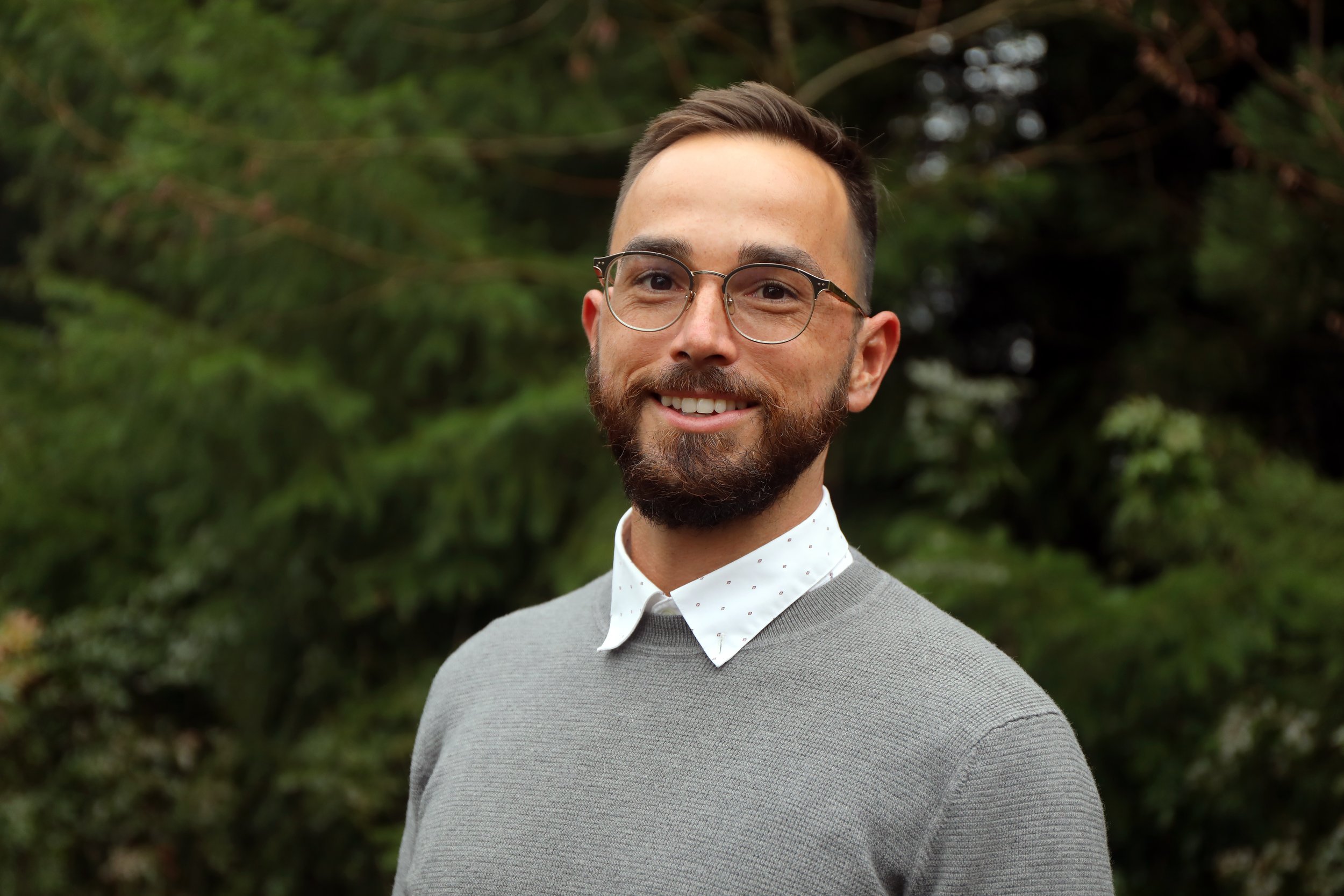
Brandon Wilder, Ph.D.
Oregon Health and Science University
Intracellular antibodies as a paradigm-shifting strategy
How do certain antibodies target pathogens - such as malaria - that are hiding within cells?
Scout note:
“Dr. Wilder’s study challenges the dogma that antibodies only function extracellularly to prevent infection by pathogens, such as malaria. The results of his project, if successful, will be paradigm-shifting and have high impact against a pathogen of global significance.”
— Wilton Williams, Ph.D.
-

Esther Borges Florsheim, Ph.D.
Arizona State Unversity
Exploring food toxins as novel mucosal adjuvants
How does the immune system sense and defend against dietary toxins?
Scout note:“Dr. Florsheim’s research hypothesis, if confirmed, would represent a paradigm shift in our understanding of innate immune recognition and food allergies. Understanding how the immune system distinguishes noxious toxins from harmless food, and how these different stimuli drive interactions between the immune and nervous systems will provide fundamental insight into how food allergies may be induced.”
— Gabriel Victora, Ph.D.
-
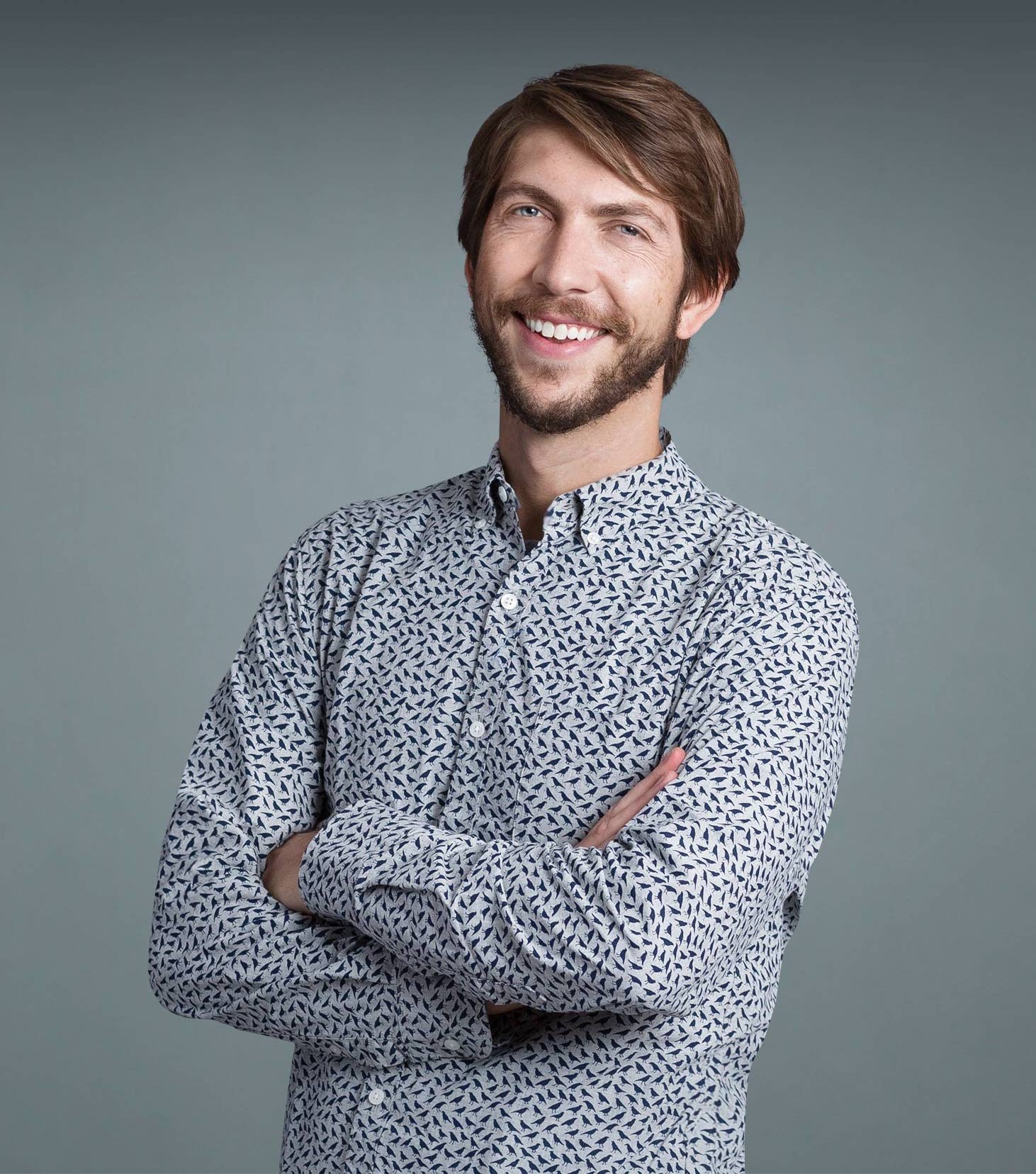
Liam Holt, Ph.D.
NYU Grossman School of Medicine
Determining how viruses impact the physical properties of the cell interior
How do viruses manipulate biophysical properties of cells to survive and replicate?Scout note:
“Dr. Holt’s project launches a new direction in his lab and could open an entirely new frontier into understanding how viruses manipulate cells. This project fits beautifully within the mission of the Hypothesis Fund and I am excited about the possibilities that remain to be discovered.”
— Harmit Malik, Ph.D
-

Eyiyemisi Damish, M.D.
Yale University
Neuronal mechanisms of statistical learning in humans
What can single neurons teach us about how the human brain recognizes patterns in repeating external stimuli (e.g. words and structure of language)?
Scout note:
“Yemi’s project seeks to understand the neurological basis of learning in the human brain directly from recordings of single cells; her rigorous computational approach and rare access to human recordings is thrilling. Her project has profound implications for understanding how neurons compute patterns and will have impact across theoretical and experimental human neuroscience.”
— Edward Chang, M.D.
-

Paul Rowley, Ph.D.
University of Idaho
The Importance of Pore-Forming Toxins for the Virulence of Fungal Pathogens
Do certain toxins secreted by pathogenic yeasts enable them to evade the human immune system?Scout note:
“Dr. Rowley is embarking on an exciting new research direction with his project, which focuses on an important class of toxins discovered in his lab. The possibility that a common mechanism might underlie the virulence of two entirely different kingdoms of pathogens are both terribly exciting and very important to investigate.”
— Harmit Malik, Ph.D.
-

Annette Rowe, Ph.D.
University of Cincinnati
Identification of a novel mechanisms of extracellular electron uptake coupled to CO2 fixation in MethanosarcinaHow do certain microbes efficiently couple extracellular electron uptake from solid surfaces (electrodes) with CO2 fixation?
Scout note:
“Annie’s project has the potential to reveal how bioengineering of methanogens may promote greater efficiency in carbon capture. She is on the forefront of strategically utilizing select microbes for sustainability purposes, and this project will allow her to develop a genetic system in a non-traditional model organism--a critical step towards gaining mechanistic insights.”
— Dianne Newman, Ph.D.
-

Lydia Contreras, Ph.D.
University of Texas at Austin
RNA distress signals of air pollution toxicity that map to observable traits
How do some cells mitigate the stress of harmful airborne pollutants better than others?
Scout note:
“Very few scientists are known to have demonstrated the courage to deeply investigate and take a stand against structural and environmental threats to health. Dr. Contreras’ project is innovative and undeniably important for human health, and I am optimistic about the potential impact of this careful science on social justice and environmental policies.”
— Karmella Haynes, Ph.D.
-

Timothy O'Sullivan, Ph.D.
University of California, Los Angeles
Predicting Primary Immune Deficiencies in Innate ImmunityCan CRISPR techniques improve our understanding of primary human immune cell function to enable the prediction of new immune deficiencies?
Scout note:
“Dr. O’Sullivan’s project takes a fundamentally different approach to doing science—it tackles primary immune deficiencies by embracing their rarity and diversity to uncover new insights. His research has potential to reveal foundational knowledge of immune cell biology, and lead to a transformative method of predicting and correcting primary immune deficiency.”
— Elaine Hsiao, Ph.D.
-

Michaëlle Mayalu, Ph.D.
Stanford Univeristy
A control theoretic framework to model diet induced gut-microbial modulation of cutaneous function
Can control theory and mathematical modeling identify gut microbiome and skin interactions that contribute to coexisting inflammatory diseases?
Scout note:
"Dr. Mayalu is taking a completely different approach to studying host-microbial interactions — one that brings new perspectives from the fields of control theory, computation, and dynamical systems. Her approach is not only bold and novel, but understanding the more fundamental concepts are so necessary in the microbiome field right now."
— Elaine Hsiao, Ph.D.
-

Arne Rietsch, Ph.D.
Case Western Reserve University
Characterization of a bacteriophage that attacks Pseudomonas aeruginosa biofilms
How do bacteriophage exploit exopolysaccharide to target bacteria that are enmeshed in a biofilm?
Scout note:
“Dr. Rietsch’s project has the potential to change how we think about treating infections that involve biofilms. I’m very excited about this project because it is a new research direction for Dr. Rietsch, and is a testament to going beyond your comfort zone in order to chase down an interesting lead.”
— Joseph Mougous, Ph.D.
-

Filipa Rijo-Ferreira. Ph.D.
University of California, Berkeley
Uncovering the Circadian Clock of Malaria Parasites
How do parasites keep track of time to bring about intermittent fevers during malaria infection?
Scout note:
"The biology in Dr. Rijo-Ferreira's project focuses not on the internal clock of the host, but rather the clock of the parasite that causes malaria. This approach of thinking about it from the perspective of the pathogen is what is really exciting. This project has potential to inform new approaches to the treatment or eradication of malaria."
— Coleen Murphy, Ph.D.
-

Kyle Daniels, Ph.D.
Stanford Medicine
Integrated Control of Gene Expression and Cell Signaling to Guide Cell Differentiation
Can machine learning predict synthetic biology solutions that guide cell differentiation of medically relevant cell types?
Scout note:
“Dr. Daniels' project uses a combination of approaches to guide cell differentiation. This project is not only exciting from a technical standpoint, but it also has potential to develop synthetic cell types that may have powerful therapeutic capabilities.”
— Coleen Murphy, Ph.D.
-

Steven Banik, Ph.D.
Stanford University
Enzymatic Manipulation of Endosomal Membranes for Bypassing Biological Barriers
How can enzymes enable bypass of biological membranes to transport proteins to the cytoplasm?
Scout note:
“Dr. Banik’s project is the first I have seen that exploits naturally occurring biological mechanisms to transport proteins into cells. I have not seen an idea that is so creative and yet rational - it is based on the fundamental pathways viruses use to reach the cytosol. It’s extremely powerful, extremely risky, and if it works, it’ll be a major breakthrough.”
— Yamuna Krishnan, Ph.D.
-

Mohamed El-Brolosy, Ph.D.
Harvard Society of Fellows &
Visiting Scientist, Whitehead InstituteIdentifying a new mode of enhancing gene expression through transcriptional adaptation
How do innate cellular robustness machineries - including the process of transcriptional adaptation - influence the landscape of genetic disease?
Scout note:
“Dr. El-Brolosy’s project explores the fundamental mediators of a key, yet untapped, gene expression adaptation process that may enable therapeutic breakthroughs in genetic disease research. This project has potential to make vast impact; it is catalytic and foundational such that, if successful, it will yield important technologies over time in rare diseases, cancer research, and other genetic diseases.”
— Mireille Kamariza, Ph.D.
-

Stephanie Langel, Ph.D.
Case Western Reserve University
Antibodies in the air: Defining the kinematics of aerosolized antibodies and their impact on SARS-CoV-2 transmission
How do antibodies behave when aerosolized (a sneeze! a breath!) and how does that affect the transmissibility of a virus such as SARS-CoV-2?
Scout note:
“Dr. Stephanie Langel will investigate a novel concept of vaccine-induced antibodies limiting aerosolized viral transmission. The results of this project will open an emerging area of study in respiratory virus biology and vaccinology, with potential to impact the way we evaluate effectiveness of vaccines.”
— Wilton Williams, Ph.D.
-

Seema Mattoo, Ph.D.
Purdue University
Understanding Fic-mediated GMPylation as a Post-Translational Modification in Cell Signaling
What is the biological significance of a previously unrecognized post-translational modification, and how might it influence host-pathogen interactions?
Scout note:
“Dr. Mattoo proposes a project that is at a pivotal stage; she has the potential to open a new area of research, with implications ranging from our fundamental understanding of cellular physiology to infectious disease in humans.”
— Joseph Mougous, Ph.D.
-

Keriayn Smith, Ph.D.
University of North Carolina
Not Junk: Noncoding RNAs as Determinants of Cell Identity
What are the functions of the significant portions of the genome that produce “long noncoding RNAs,” and what roles might they play in cellular processes or disease?
Scout note:
“This project tests the bold idea that long non-coding RNA have essential functions in spite of their low-expressed levels. Doing the careful work to link function with lncRNAs will spur more characterizations, large collaborations, more data to be curated, and potentially generate entirely new insights from the hundreds of thousands of RNA ‘omics datasets that are in the public space.”
— Karmella Haynes, Ph.D.
-

Eviatar Yemini, Ph.D.
UMass Chan Medical School
Evolutionary changes in behavioral circuits: Comparing whole nervous systems across 15 million years of ecological adaptation
How do nervous systems evolve over millions of years in response to changing climates and ecologies?
Scout note:
“Dr. Yemini’s project seeks to understand how neuronal circuits have evolved, how development shapes these circuits, and how these circuits respond to dramatically different ecology and stimuli in the context of living, developing, and adapting organisms. This project is highly innovative and opens a new frontier into the field of evolutionary neurodevelopment.”
— Harmit Malik, Ph.D.
